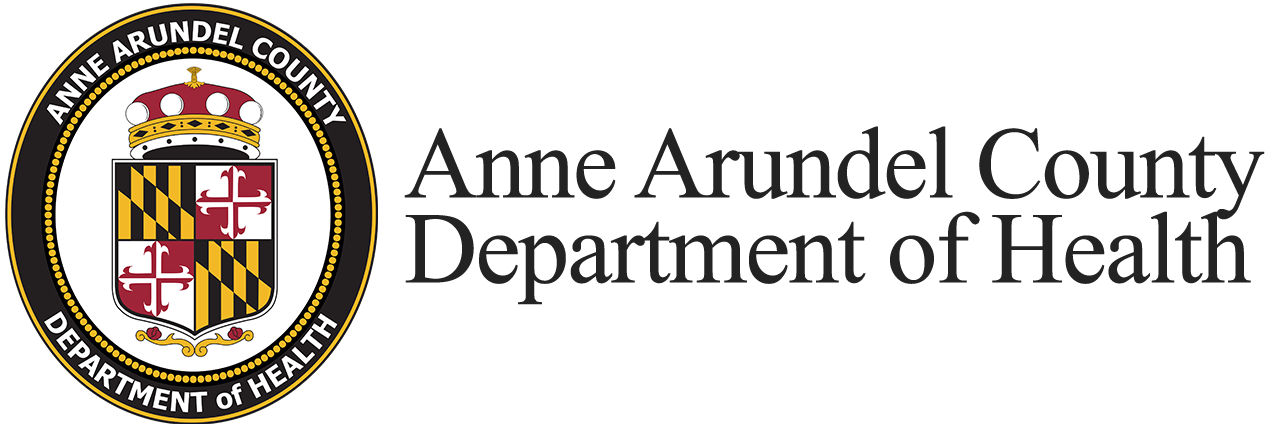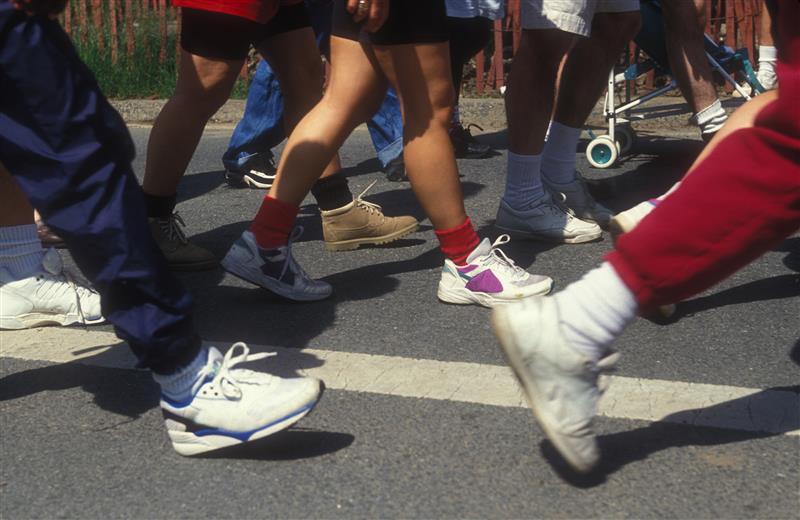The Importance of Physical Activity
Here are some of the good things that physical activity will do for you:
- Help control your weight
- Help lower your blood pressure and blood cholesterol levels
- Improve your circulation
- Reduce your risk of Type 2 diabetes (adult onset diabetes)
- Reduce your risk of some cancers
- Keep your bones and muscles healthy and reduce the risk of falls
- Help you live longer
- Relieve stress
- Lift your mood
- Sleep better
- Improve your posture so that you look your best
Set realistic goals. If you have a medical condition, check with your physician for recommendations before starting a new program
Who Is At Risk?
In 2022, 35.4% of Anne Arundel County adults reported being overweight, and 36.9% of adult residents reported being obese. In 2022, nearly 23% of adults in the County reported that they did not do any physical activity in their leisure time. Physical activity has been linked to a lower risk of several types of cancer. Being active may also help to prevent weight gain and obesity, which may in turn reduce the risk of developing cancers that have been linked to excess body weight. A physically active lifestyle may also lower a person's risk of other health problems such as heart disease, high blood pressure, diabetes, and osteoporosis.
More and more children are becoming overweight. In fact, the number of overweight children has tripled in the last 30 years. In 2012, the Anne Arundel County Department of Health conducted a study on the problem, and the results were similar to those in national studies. The study found that 15.6% of children ages 2 to 19 are overweight and another 16.9% are at risk of being overweight. One reason may be that kids spend more time playing video games, using the computer and watching television. The school day has become less active too. Recess time has been cut and gym classes meet only twice a week in elementary school.
Physical activity becomes even more important as you grow older. Americans aged 65 and older are the least active age group in the United States. In 2020, only 15% of men and 11% of women aged 65 years and older met the Physical Activity Guidelines for Americans for aerobic and muscle-strengthening activities; these were the lowest proportions of adults meeting the guidelines compared to all other age groups. Research has shown that seniors who have healthy lifestyles that include regular physical activity reduce their risk for chronic diseases and of disability. Another recent study found that women who walked more than 4 hours per week (no other exercise) were 41% less likely to break a hip than those who walked less than an hour a week.
What is Fitness?
The word “fitness” refers to your overall health. When you are fit you have:
- Energy to do what you want to do
- Reduced risk of health problems
- The chance to look and feel your best
- Strength and endurance for an emergency
What is Physical Activity?
Physical activity is anything that gets you moving at a moderate pace (equal to a brisk walk). Other examples are using the stairs, housework, yard work, bike riding, hiking, recreational sports or dancing. Physical fitness is your ability to perform physical activity. The more you move, the more you improve.
- For health benefits, physical activity should be moderate or vigorous intensity.
- Make physical activity a regular part of the day at home, at work, and at play.
What is Exercise?
Exercise refers to a planned program of physical activity that includes repetitive motion, for example: an aerobics class, stair climbing machine, jogging or weight training. There are three types of exercise:
- Aerobic exercise: Aerobic activities like walking, running and jogging make you breathe harder and your heart beat faster. They help your heart stay healthy.
- Strength building exercise: Strength building activities, such as exercising with light weights, help build muscle.
- Stretching exercises: These exercises, such as flexing and extending your legs while walking, help stretch out muscles that have tightened with exercise.
In any program, it is best to have some of each kind of exercise.
How Much Do I Need?
According to the Physical Activity Guidelines for Americans,, adults should do at least 150 minutes (2 hours and 30 minutes) to 300 minutes (5 hours) a week of moderate-intensity, or 75 minutes (1 hour and 15 minutes) to 150 minutes (2 hours and 30 minutes) a week of vigorous-intensity aerobic physical activity, or an equivalent combination of moderate- and vigorous-intensity aerobic activity. Adults should also do muscle-strengthening activities of moderate or greater intensity and that involve all major muscle groups on 2 or more days a week, as these activities provide additional health benefits. Start slowly – 10 minutes at a time is fine. You don’t have to do it all at once!
The Physical Activity Guidelines for Americans also recommends that children and adolescents should do 60 minutes or more of physical activity each day. Most of the 60 minutes or more per day should be either moderate- or vigorous-intensity aerobic physical activity and should include vigorous intensity physical activity on at least 3 days a week. Children and adolescents should include muscle-strengthening physical activity on at least 3 days a week, and children and adolescents should include bone-strengthening physical activity on at least 3 days a week. Encourage your child to participate in activities that are age-appropriate, enjoyable and offer variety! Just make sure your child or adolescent is doing three types of physical activity:
- Aerobic Activity, such as brisk walking, should make up most of your child’s 60 minutes per day
- Muscle Strengthening, such as gymnastics or push-ups, at least 3 days per week
- Bone Strengthening, such as jumping rope or running, at least 3 days per week
Stick with it! Picking enjoyable physical activities that match your abilities will help you stick with them. If you are not sure where to start, use the example below.

For more information on the Physical Activity Guidelines for Americans, visit cdc.gov/physicalactivity/basics/
Set a Good Example for Your Kids
Your children will follow your lead. Physical activity can be fun as well as good for them. The following tips will help you and your child to get moving:
- Your children copy what you do. If you exercise, they will too. Take a walk together when you get home from work. Pick a CD you both enjoy. Dance together.
- Turn off the television and promote active play indoors and outside. Use games like hide and seek and scavenger hunts to get children moving.
- Teach your children all the old games you enjoyed. Try skipping rope, hopscotch and hula-hoops for starters. See “Get Movin’ with a Twist on Your Kids' Favorite Games” for more ideas.
- Don’t count on organized sports for all the action your child needs. Children who are physically fit and active every day (not just on game day) have fewer injuries. Playing It Safe will help you take the steps to prevent injuries to your children.
- Find activities your child enjoys and can feel successful doing. Let your child help you choose the sports and activities. Need more ideas on getting moving?
- Plan family time around activities that are fun for everyone. Try skating, swimming, biking or walking as a family.
- Be sure to take water with you if you will be out for 30 minutes or more. Encourage your children to stay hydrated.
- Check the program guides for Anne Arundel County and Annapolis City Recreation and Parks for fun family ideas. Program guides are available at local supermarkets and libraries and online at Anne Arundel County Recreation & Parks and Annapolis City Recreation & Parks. Check the YWCA or other organizations in your community for classes, activities and opportunities for fun and fitness.
Been doing this for a while? Then consider adding to your program. Adults should have at least 150 minutes a week of moderate-intensity activity such as brisk walking and at least 2 days a week of activities that strengthen muscles.
Safety First
Here are some things to think about before beginning or increasing your physical activity:
- Wear the right clothing. For example, wear properly fitted walking shoes and bright clothing if you are walking. Dress for the weather. Wear a hat and gloves when the temperature drops.
- Wear any protective gear that is needed for your sport. For example, wear a helmet if you are riding a bike or knee pads, elbow pads and a helmet if you are in-line skating. Some active sports may require a mouth guard or other special equipment. Consult your coach or a fitness expert if you have questions.
- Always carry identification if you are away from home. Slip a piece of paper with your name, address and phone number in your pocket in case of an accident. Consider taking your cell phone with you. Let someone know where you will be.
- Be aware of your surroundings. Always walk in well-lit areas. Consider walking, jogging or skating with a friend or family member.
- If you wear earphones, keep the music turned down so that you can hear traffic and others around you. Stop at street corners and look both ways when crossing. Use the sidewalk instead of the street whenever you can.
- Be sure to take water with you if you will be out for 30 minutes or more.
- Stretch before and after exercising to reduce muscle pain and injuries.
- Set realistic goals. If you have a medical condition, for example asthma, diabetes, heart disease or back problems, check with your health care provider or physical therapist for their recommendations before starting a new program.
- Apply sunscreen 30 minutes before going outside. Use a broad-spectrum (protects against both UVA and UVB rays) sunscreen with an SPF of 30 or higher.
- To help prevent insect bites, use a repellent with DEET (on skin or clothing) or permethrin (on clothing) and wear long sleeves, long pants and socks. Products containing permethrin can be used to treat boots, clothing and camping gear which can remain protective through several washings. Repellents containing 20% or more DEET (N, N-diethyl-m-toluamide) can be applied to the skin, and they can protect up to several hours.
- Stop the activity and get medical help at once if you have chest pain, feel faint or light-headed or have trouble breathing.

